Look, we know you’re probably not going to try to jump the Grand Canyon, and the odds of you needing to outrun an erupting volcano are pretty slim, but you still have to know how fast an ATV can go.
Being extraordinarily fast is a point of pride, and insane speeds are the ultimate adrenaline rush. So whether you’re getting chased by a bear, chasing down bandits, or just enjoying your weekend trail ride, ATV speed matters most.
But not all four wheelers are created equal. The max speed of ATVs varies depending on engine size, configuration, and a number of other factors. Let’s take a look.
Comparing Top Speed of Various ATV Engine Sizes (Stock)Your engine size is your biggest ATV speed limiter. Smaller engines go slower, bigger engines go faster. Simple right?
Not quite. As you’ll see, every vehicle has a speed limiter installed that artificially limits your ATV’s top speed.
Let’s go through some of the most common engines.
The 110cc ATV’s are designed to be youth models. They’re built for kids 10 and up. As such, their speed is limited to 30 MPH. The engine can theoretically reach higher speeds, but the ECU keeps it from going over 30.
Now we get to the group of engines that don’t hit their speed limiters. Most 450cc engines top out around 55 MPH. That’s plenty fast for a modest engine like this. You won’t hit this speed often either—just on the flat-out straightaways.
A 570cc engine gets another 10 MPH over the 450. If you’re looking for some real nail-biting ATV speed, this will get you there.
Now we’re getting into the blisteringly fast range. These engines do tend to hit their on-board ATV speed limiter of 75 MPH. But when you’re going that fast, it doesn’t really matter. With a max speed this high, you’ll be hitting speeds of 40–50 MPH regularly on trails.
With 700cc of displacement, this ATV can put out a lot of power. If speed is what you’re after, this quad will give it to you… at least until you hit the built-in rev limiter at around 75 MPH.
If speed is what you’re after, this quad will give it to you… at least until you hit the built-in rev limiter at around 75 MPH.For the fastest ATV top speed, you need to go with a quad rocking a 1000cc engine. With a limiter raised to 80 MPH, it stands to reason that if you want to go fast, there’s nothing better than a 1000cc ATV.
They jump off the line and get to high cruising speeds in no time at all. That kind of speed and acceleration makes for some hair raising trail rides and gives you the ultimate adrenaline rush.
Is It Possible to Limit the Speed of an ATV?There are many factors that can limit the speed of an ATV. Some of them can be easily controlled by you, others cannot. Whether you want to slow down for a calmer ride or not, these are the ATV speed limiters that you need to look out for.
Weight is the single biggest factor that can slow you down inadvertently. The weight of everything on your ATV from your bumper to your backpack will slow you down.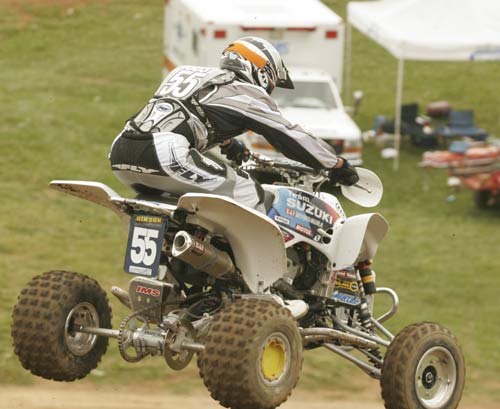
Take a look at what you bring with you on your ride. When we’re out on remote trails, we regularly pack on 30 to 50 pounds of supplies too. We pack a back with tools and small spare parts. We strap on a cooler filled with drinks, lunch, and snacks. We even keep a big water bottle in our backpack.
Combine that with bulky jackets, boots, and pants if it’s cold out (not to mention a few pounds of our own winter weight), and all of a sudden our ATV speed is much lower than it was before.
Just wait until you get caked with mud too.
A big bumper like this offers excellent protection but can slow you down. You have to consider the tradeoff when adding any weight to your vehicle. Is the protection worth losing a few MPH of your ATV’s top speed? Usually the answer is yes, but if speed is you’re only goal, you might reconsider.It’s fun and practical to load up your machine with better bumpers, mirrors, and protection, but that can weigh you down, too.
Aftermarket bumpers tend to be heavy-duty and just plain heavy. They’re great for keeping your ATV in one piece but will slow you down.
If you go further and add a big lift kit or a windshield, that will slow you down as well.
Bigger tires have a strange effect on your top speed. If you make no other changes, a larger diameter tire will act as a high gear kit.
What that means is technically, a larger tire will increase your ATV top speed. However, the increase in rotating mass and decrease in torque will outweigh any theoretical speed increase you get.
Big tires will slow you down and have a negative impact on acceleration without a gear reduction.
A gear reduction is a great way to slow down your machine and turn some of your engine’s power into torque.
Typically, gear reductions install in your transmission (or are part of GDP Portal Gear Lifts) and they boost torque and power. They also bring your top speed down by a small amount. Depending on your gear reduction, you might end up lowering your ATV’s top speed by 10–15%.
Depending on your gear reduction, you might end up lowering your ATV’s top speed by 10–15%.
It’s a win-win if you want to slow your ride a bit.
How to Increase Top ATV SpeedIncreasing your ATV’s top speed is a bit trickier, but there are a few tried and true methods.
The same way that adding weight slows you down, shedding weight can speed you up.
If you’re craving hitting your ATV’s max speed, leave the cooler at home and pack lightly. And when you’re planning upgrades, pay attention to the weight of your bumpers and tires. If you manage to keep your total weight at or below stock, you’ll be flying.
Plus, losing weight is free.
This Sportsman is running stock with no extra weight added. It’ll go just as fast as the manufacturer intended. Installing bigger tires, bumpers, and a cooler can reduce this ATV’s max speed dramatically. If speed is your #1 concern, keep it light!A high gear kit is the opposite of a gear reduction.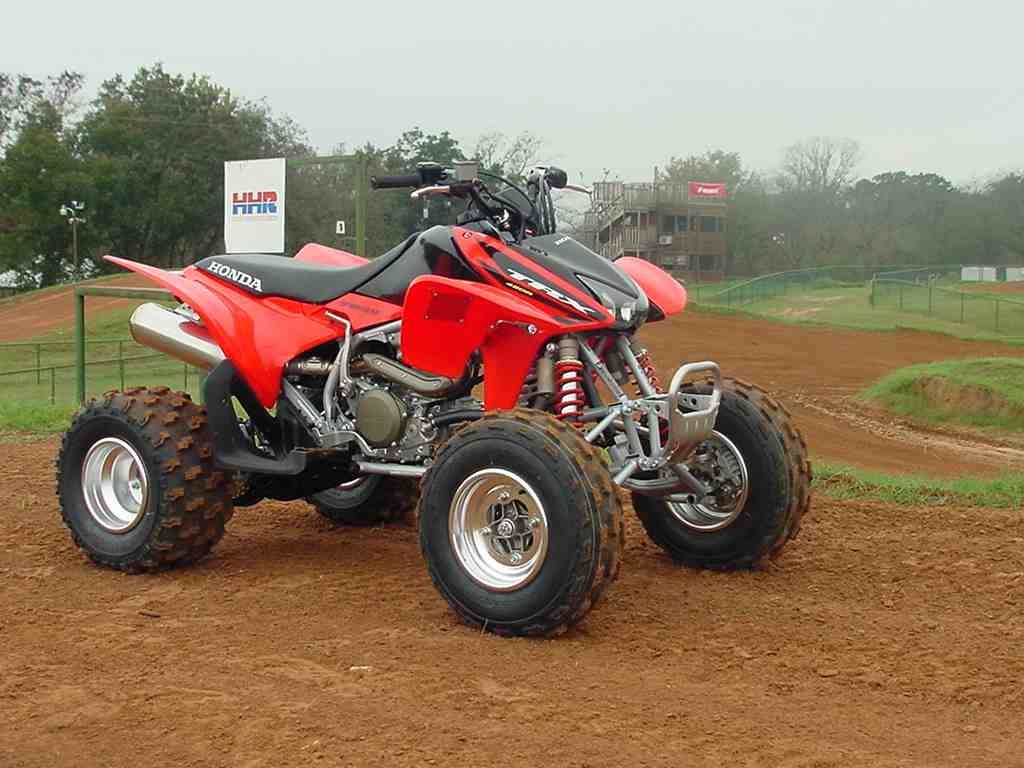 Instead of giving you more torque, it reduces torque and boosts speed.
Instead of giving you more torque, it reduces torque and boosts speed.
It’s a great way to increase your top ATV speed, but it does make your machine more sensitive to weight. You’ve got to keep it light to burn rubber with a high gear kit.
Larger tires are a no-go with a high gear kit, too. You’d basically have two high gear sets working together and reducing torque so much that you’d only hit your top speed in a salt flat somewhere. Not ideal.
A clutch kit is a great way to eek out extra performance from your ATV’s engine. Clutch kits are designed to optimize your RPM curve so that you’re getting your maximum horsepower for as long as possible as you throttle down. A proper clutch kit can increase your acceleration and top speed.
With a carefully tuned acceleration curve, you’ll have the fastest ATV possible.
Whether you need to make big changes or small, your ATV speed is in your control. Get tweaking, get riding, and see how fast your ATV can go.
by Lee
You can expect a top speed of around 80MPH for the higher 1,000cc ATV and Side By Sides. There are modifications you can make to go even faster, but this is about where manufacturers set at from the factory.
The average speed overall is about 50mph. This is the golden number and plenty fast for the average adult. Trust me, 50 on an ATV “feels like” 80 in a car.
The slowest ATVs are going to be the ones made for kids, but these and even some adult ATVs have throttle limiters. With a kids ATV you could get speeds where its barely moving (1mph) to very fast running speeds (25mph). Just make sure to follow the laws when it comes to kids ATVs and warning decals posted on the machine.
Here is a list of the cc engine options and their top speeds. Keep in mind these are the average numbers; some ATV manufacturers can go faster or slower.
| cc | ATV | Side by Side |
| 50 | 10 MPH | – |
| 70 | 15 MPH | – |
| 90 | 25 MPH | – |
| 110 | 30 MPH | 10 to 25 MPH |
| 150 | 35 MPH | 15 to 30 MPH |
| 200 | 40 MPH | – |
| 250 | 50 MPH | – |
| 300 | 53 MPH | – |
| 350 | 55 MPH | – |
| 400 | 57 MPH | – |
| 500 | 60 MPH | 45 MPH |
| 570 | 65 MPH | 45 MPH |
| 650 | 70 MPH | – |
| 800 | 75 MPH | 60 MPH |
| 850 | 75 MPH | – |
| 1000 | 80 MPH | 80 MPH |
The 50, 70, and 90cc ATVs may seem lower than people expect. The numbers are based on models that ship to the US. You can get models that do go faster, but the US has stringent laws when it comes to ATVs marketed to kids. I can not stress this enough, make sure to follow the laws and warnings for children’s ATVs!
The numbers are based on models that ship to the US. You can get models that do go faster, but the US has stringent laws when it comes to ATVs marketed to kids. I can not stress this enough, make sure to follow the laws and warnings for children’s ATVs!
Most ATVs have throttle limiters that are easily adjusted with a screw and wrench. This is great for someone new to a machine that you don’t want to go too crazy.
It’s not meant as a full stop because anyone with a screwdriver can adjust it. But if the person doesn’t know about this, most don’t; then you could have a great way to limit an ATV’s power.
Another way manufacturers can limit the speed of an ATV is with the keys.
Can-Am is big on this with their DESS keys. You can have one key that is full power, another one that is limited on the top end, and another one that is a ‘work’ key where it’s slow but has a ton of torque.
Digital keys are becoming rare especially on the more affordable ATVs.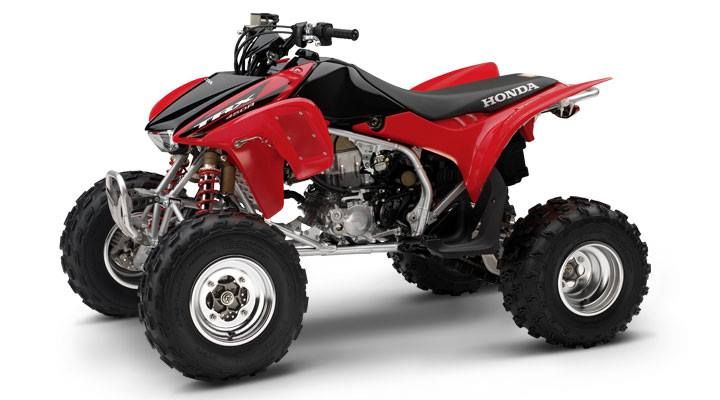 But the more affordable ATVs are also, the slower of the bunch.
But the more affordable ATVs are also, the slower of the bunch.
This is something to keep in mind when you want to get an ATV that you think might be too much power. You can always get one with different keys with different power levels. This way you have the option of more power just by changing out the keys. Keep in mind that some manufacturers don’t support this option.
If you ask me, ATV speed and cc size have become one big pi$$ing contest. I’m using the $ sign on purpose because it means big bucks to manufacturers.
Whatever. That is all I can say about it. My days of racing and going fast are over. I rather have a machine that is just ‘enough’ and won’t kill me on gas. This is why I like the 570cc and 650cc engines. They’re fast enough and better on gas than the 800 or 1,000’s.
I honestly don’t know why anyone wants the 1,000cc engines and even wrote about it here.
ATVs don’t have enough weight to them to use all of that power for hauling. The only thing that it’s good for is just plain old going fast. Unless you race them for a living, I don’t see the need. Call me an old man but after riding every cc size ATV I’ve come to value the ~600cc range the most.
The only thing that it’s good for is just plain old going fast. Unless you race them for a living, I don’t see the need. Call me an old man but after riding every cc size ATV I’ve come to value the ~600cc range the most.
I don’t want to save never, but I don’t think they will. 80mph has become the limit that manufacturers will push. Where they will go from here is pushing the 0 to 60 numbers. Top speed is over, but who gets to the top speed quicker is still underway.
Overall it’s a legal issue. Riding ATVs is dangerous, and the manufacturers don’t want to add any more top speed to that factor.
You can make your ATV faster; it’s not hard to do. But I must state that ATVs are dangerous so wear proper gear and ride understanding the dangers. I’ve seen horrible things happen so please be responsible.
The easiest modification is to get a new exhaust. The standard pipes restrict flow and thus power. Keep in mind this will make the quad louder, but many pipes are not that bad and give the ATV a nice sound. Speed aside, a nice-sounding pipe is a must.
Keep in mind this will make the quad louder, but many pipes are not that bad and give the ATV a nice sound. Speed aside, a nice-sounding pipe is a must.
Make sure you get the correct pipe for your ATV. I’m a fan of HMF, here is one example – Can-am HMF PERFORMANCE PERFORMANCE Series Slip-on Exhaust (Amazon Link Ad).
You can also get an engine remapping module.
This will reprogram the engine to give you more power and might even be needed for some pipes. Keep in mind this might void your warranty with some manufacturers.
The biggest thing that can slow your ATV or side by side is the tires. You need to get tires that fit the situation you’re most likely riding in.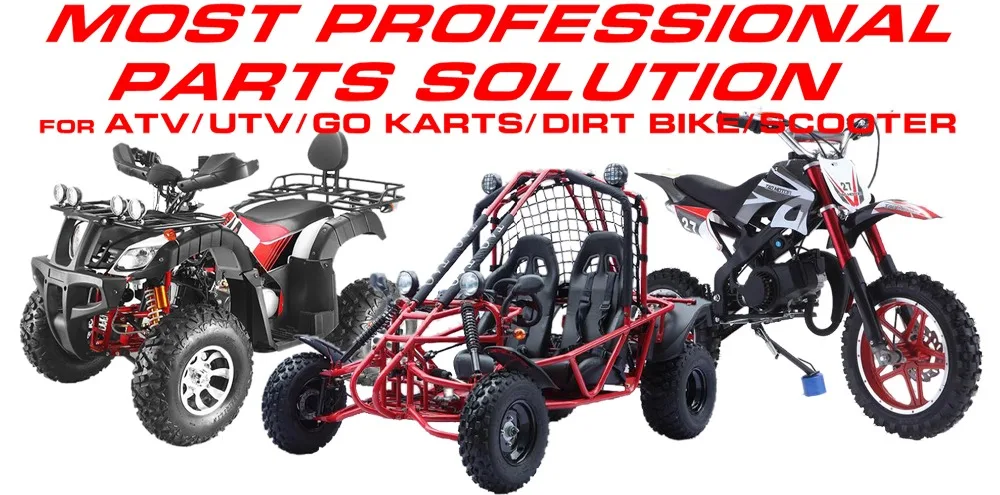
If you ride in muddy and rough areas, you need a bigger/aggressive tire than someone who races in the dunes. Keep this in mind if you’re concerned about speed.
If you want to make your ATV faster make sure you’re not already limited. I’m not talking about the governors that the manufacturer has to install but things like user available settings.
Earlier I mentioned you might be using a digital key that is limiting the power. Other manufacturers will use a fuse in the fuse box to determine your speed settings.
Read your owner’s manual to see if your ATV has any speed limiters built-in. I can’t tell you how many times I’ve seen someone complain about their slow ATV and come to find out they were using the wrong digital key.
The popularity of motorcycles is growing every year, and this is because people are discovering new and new ways to use it. So, they usually decide to buy an ATV in order to easily overcome almost impassable roads.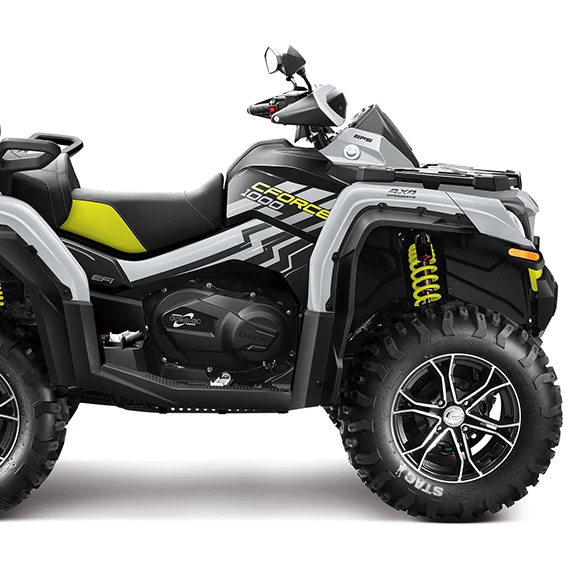 And then options are already possible, because modern models are distinguished by endurance, thoughtful comfort, and maneuverability. They are adapted for various needs: transportation of household goods, fishing and hunting trips, long and distant travels and, of course, entertainment and sports competitions.
And then options are already possible, because modern models are distinguished by endurance, thoughtful comfort, and maneuverability. They are adapted for various needs: transportation of household goods, fishing and hunting trips, long and distant travels and, of course, entertainment and sports competitions.
For all their merits, ATVs do not belong to the high-speed mode of transport. But given their key mission, they don’t need this, because indicators such as power, cross-country ability, and safety level are much more important. And yet, which model to choose if you want to be smarter? And in what cases is this parameter really relevant? Experts of the Sport-Extreme Motorcycle Center will tell about this.
Models of modern "ATVs" differ in design in order to better meet certain operating tasks. The differences between the types of ATVs relate, among other things, to the speed parameters that motor vehicles are capable of developing.
The most versatile and therefore popular type of ATV, which is ideal for driving on country roads and off-road, forests, marshy and rough terrain, mud and sand, primer. The maximum developed speed of utilitarians reaches 75 km/h or more, but in most difficult areas you will not need more than 20-40 km/h. An excellent choice for those who spend the season in the country or prefer to go hunting, fishing, or on a motorcycle trip.
Utility vehicles are equipped with powerful engines, good suspension, and high ground clearance. For better grip on the road, such ATV equipment is equipped with deep-tread rubber, and the wheels themselves have wide tires. This allows you to provide the best possible grip on the ground, which is not stable outside the city.
Such models are designed for operation in a flat highway, and here it is quite possible to travel at a high speed compared to other types of quadrics. The possibilities of urban versions in this regard reach 80 - 95 km / h. And this is comparable to the cruising speed of a passenger car.
The possibilities of urban versions in this regard reach 80 - 95 km / h. And this is comparable to the cruising speed of a passenger car.
These speed capabilities are affected by a number of design and technical characteristics. In particular, highway motorcycles have low ground clearance, narrower tires and not as deep a tread as utility models, respectively, a completely different area of contact with the road surface. So when choosing such a model, it should be borne in mind that even light off-road conditions will be a test for it.
Such models are capable of accelerating up to 120 - 130 km / h (for example, Yamaha YFM 700 R / SE). This is facilitated by the lightweight design of the device and compact dimensions, because this technique is designed to perform jumps and other tricks. The fuel tank is small compared to utility and road ATVs, and the engine is medium in volume, which allows you to give the equipment a short-term load for acceleration and leaving the springboard.
For the safety of young drivers on these models, the speedometer will not show more than 45 km/h. But this will be quite enough to drive through the fields and rural roads, forest parks and spacious courtyards with comfort, pleasure and for the benefit of the peace of mind of parents, naturally, away from the roadway and under the supervision of adults.
In addition, many models are equipped with a remote engine shutdown system. Children's models are designed for the age of 6 - 12 years and are able to withstand a child or teenager weighing, as a rule, up to 55 kg.
In the catalog of the "Sport-Extreme" center you will find motor all-terrain vehicles for any purpose. The website of the online store presents a wide range of ATVs from trusted manufacturers:
Delivery across Russia by transport companies.
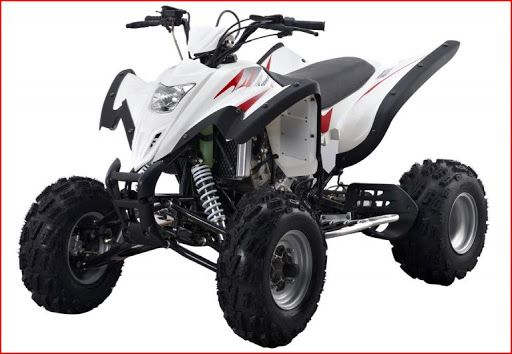
models suitable for your goals and expectations.
For a detailed consultation on availability, prices and features, just call +7 (4822) 65-65-03.
Given that you are here and want to recognize the full throttle of a 125cc ATV, you need to know what an ATV is and also how fast a 125cc ATV is.
For beginners, an ATV is short for ATV. All-terrain vehicles of all types of soil provide the ATV with a large area.
125cc ATV mainly for youth. This is is a safe choice for beginner bikers who are new to it and also want to learn more about driving as well as the roads.
Whenever we talk about 125cc, it is considered to be in the middle category because it can reach top speed and provide enough traction to help you get through the dirt without any problems.
When it comes to ATVs, top speed refers to the highest degree of speed a vehicle can achieve when traveling on the road. Full throttle varies from bike to bike and depends on a variety of factors which consist of the types of materials used and the components installed.
Full throttle varies from bike to bike and depends on a variety of factors which consist of the types of materials used and the components installed.
Contents
What does 125cc mean? The 125cc engine will take up 125cc, while the larger 700cc engine will take up 700cc. The more cubic centimeters an engine has, the more air and fuel it can consume, which usually results in more power.
125cc ATV can go up to 40 mph ideally . You can slow down to 10 mph and sometimes 5 mph, or you can hit the gas all the way to 40 mph. Youth ATVs are equipped with speed limiters to control their speed. .
Thanks to its many uses, the 125cc ATV The is an excellent choice as a starter for teenagers as well as the as it is fast enough to keep their passion going as well as running at around 22 mph or 38 mph. Most importantly, this is a great beginner quad, not powerful enough for serious riding technique, jumping, big climbs or racing.
Most importantly, this is a great beginner quad, not powerful enough for serious riding technique, jumping, big climbs or racing.
Choosing the right engine for you or your child is extremely important when buying an ATV.
Depending on the power of the cylinder, you will surely be able to choose the right ATV for you. Look into joining a list for a better understanding.
Approximately 70 cc - they are used for children up to 11 years of age.
70 to 90 cc cm - they can be used by teenagers aged 12 to 15 years.
125 to 250 cc cm - suitable for both beginner teenagers and adults.
Cylinder size can start at 50cc and go up to 700cc.
But keep in mind that height is also an important factor when choosing an ATV. Classification from 125 to 250 cu. CM is ideal for beginners who are not familiar with wilderness riding and are unfamiliar with rough or rocky roads.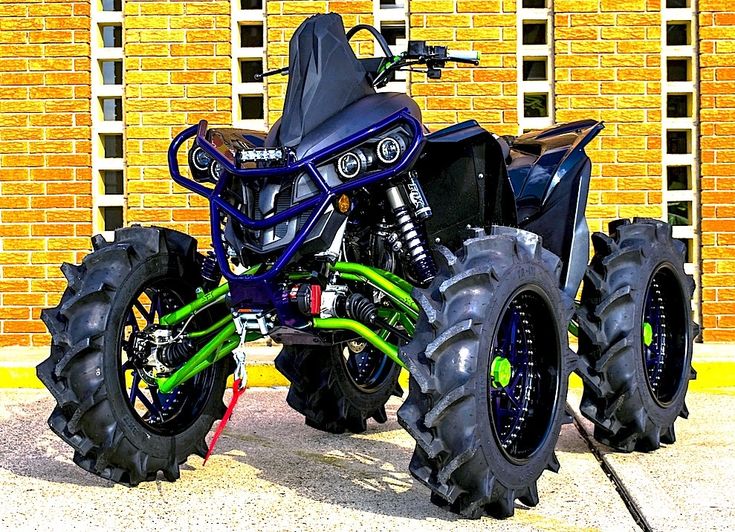 One of the most practical tools for adults or professionals ranges from 450cc to 700cc.
One of the most practical tools for adults or professionals ranges from 450cc to 700cc.
If you are looking for an ATV for your child, you don't have to worry as you stay in the best area. From the list above, it can be seen that engines from junior to 90cc are suitable for children. But to boost the performance of an ATV, different brands have gone to great lengths to find some fantastic 125cc ATVs specifically made for kids.
They are supervised by professionals to make sure they are absolutely safe for children. Each kids quad has unique features as well as additional safety options. If your child loves the outdoors and travelling, an ATV can offer the best taste of nature and flexibility to their hearts, while the controls are still in your hands.
If you do a thorough research, you will certainly be able to find the right one for your child. A couple of points that might help is to make sure you buy one with a speed limiter and it has both headlights and taillights installed as they help a lot.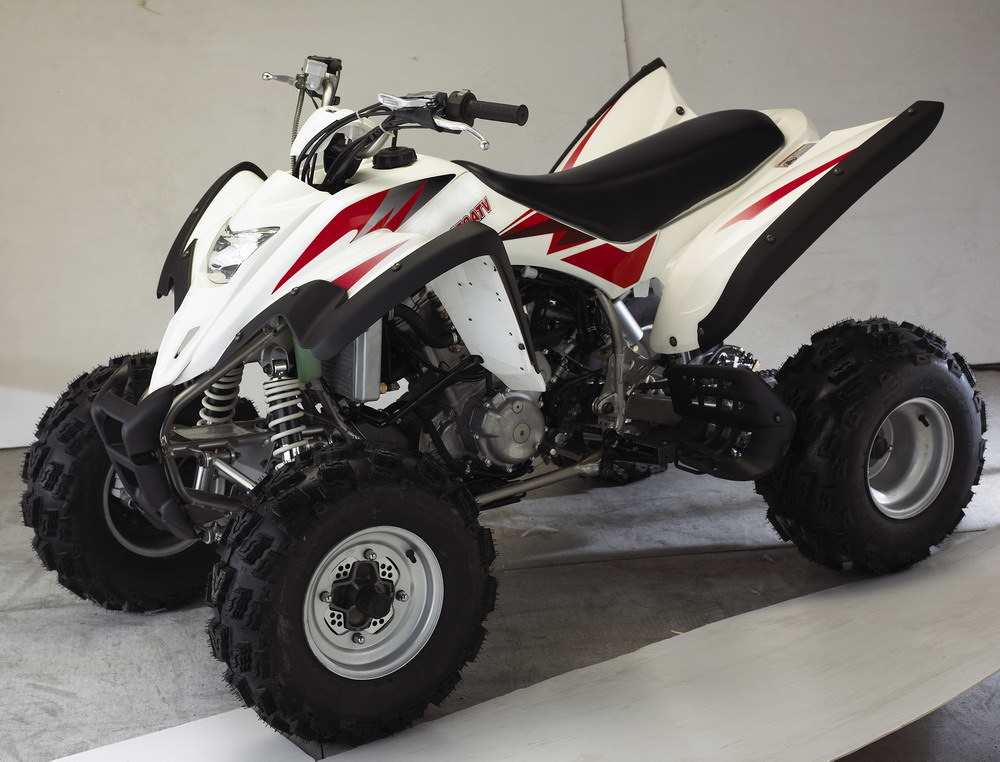
ATV suppliers generally do not set biker weight limits for their youth models. It has optimum load capacity 364 lbs , engine stop button, and push button starter controls. The highest center of mass is cunning.
While a full-size ATV with a huge engine can fit an adult, the risk of injury to a teenager on such a device is much higher. For shorter riders, the 125cc ATV is a good choice for the . The 125cc ATV is not the smallest available, however it is not exceptionally large or powerful compared to other models.
1. Use the best fuel.
A quick and easy change you can make is to start using higher octane gasoline. Many ATVs don't need to use higher octane fuel from the manufacturer, but this can help. increase the efficiency of your engine.
If you can, do not use ethanol-based fuel, and also choose fuel with a higher octane rating of . It will cost a few dollars even more than inexpensive fuel, but you will definitely notice the difference when you step on the gas pedal.
Higher octane gasoline burns cleaner, providing better gas mileage and much less wear on the mechanical parts of your gas system. Of course, the best gas mileage on an ATV is not as noticeable, but there is a difference in performance.
2. Upgraded air filter.
You must be regular inspection of the air filter and clean it if necessary. If the air filter starts to get overloaded, it will certainly affect the amount of air the engine can use to run. Driving with a clogged air filter is almost like turning off your engine.
The increased air circulation these filters provide will definitely allow your engine to get even more air. Much more air-fuel mixture means even more power.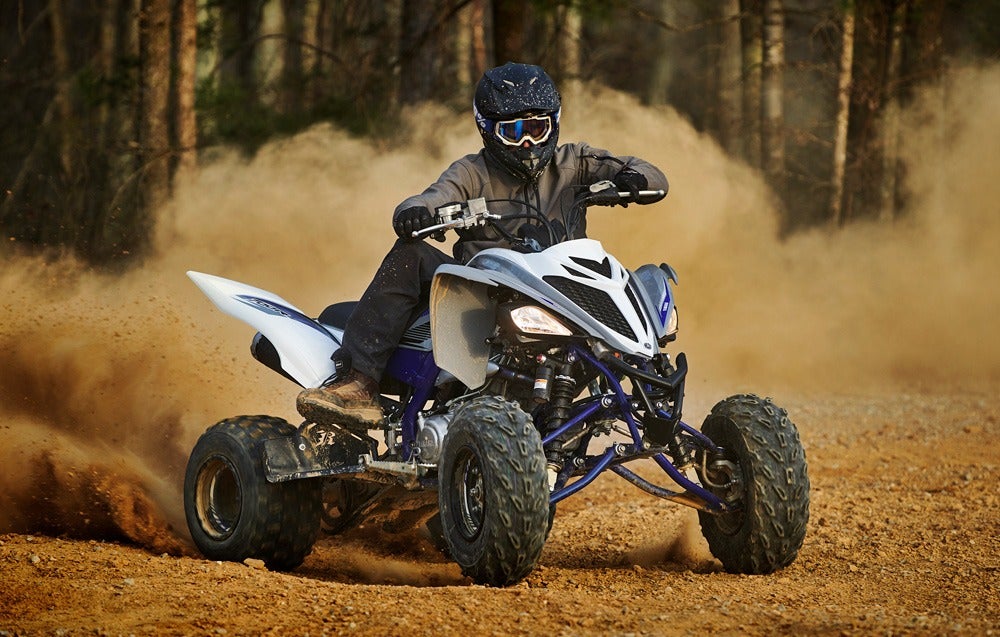
3. Adjust the throttle stop screw.
On many ATVs, if you look to the right side of the handlebar where the throttle is, you will see the boss. A screw will stick out on the handle, this is the throttle limiter. Throttle limiter will limit the amount of throttle You can provide your engine while driving.
Be sure to turn the screw all the way out if you are going to use the maximum throttle. To adjust this, simply loosen the lock nut holding the throttle stop screw in place, replace the screw, and tighten the lock nut by pulling it back.
Check the throttle limiter screw to make sure you are getting the limit your engine can turn on.
4. Change tire size, weight and pressure.
Of course, tire pressure depends on the type of terrain you drive. When riding in sand or snow, lower tire pressure will certainly make you much faster, but on flat, hard surfaces, higher tire pressure can help a lot. more. I would of course is recommended to run at around 5 psi as good throughout the entire number.
more. I would of course is recommended to run at around 5 psi as good throughout the entire number.
If you want to make your ATV faster, you need lightweight aluminum wheels. Tire size can also make a difference, depending on what you're doing. Make sure you choose the right tire size for your ATV and your edges.
If you want much more speed, choose a smaller tire. If you need a higher top speed, choose a larger tire. Tire size is very comparable to replacing your tailoring sprocket. A larger tire will need even more power to convert it, but will cover a larger area in one change. I usually don't change tire sizes unless I'm trying to increase the ground clearance of my quad.
5. Add nitrous oxide.
Adding a nitrogen kit to your ATV can give you a nice speed boost when you really need it. In fact, they are not that difficult to install or use.
There are several different nitrous oxide configurations you can choose from, such as wet or completely dry.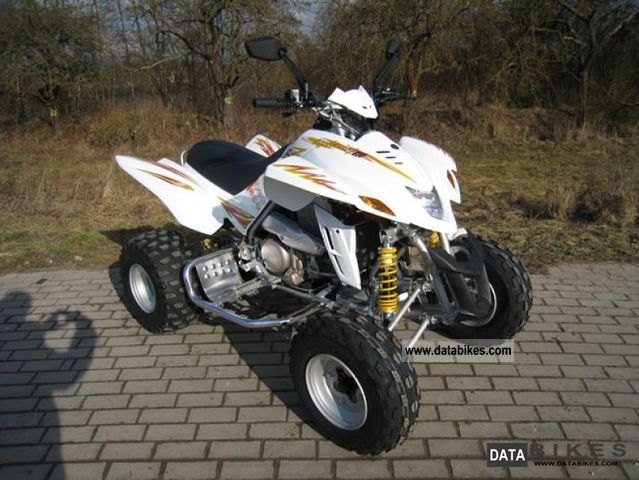
6. Update the exhaust.
Upgrading the exhaust system on your ATV can be expensive and require some work. However, this is a surefire way to improve the efficiency of your ATV. Since more air can come out of the engine, it can take in much more air. . This unit works perfectly in parallel with a high flow air consumption system.
If you can't pay for an entire exhaust system from the exhaust manifolds down, you can always get an efficient overhead exhaust. It won't boost power as much as an efficient exhaust system, but it will certainly give you a bit more horsepower.
Generally, service exhaust systems are larger than the supply, or are definitely tapered for gradual increase in size. This provides even more airflow through the engine. With even more combinations of air and gas, you will really feel even more power and speed while riding.
7. Change the gear ratio.
To change the equipment ratio, you will definitely need to get a new front or rear sprocket and change the existing one. Many cyclists do what's called "downshifting" where you get a big rear sprocket to increase speed. This will cause your full throttle to drop.
Many cyclists do what's called "downshifting" where you get a big rear sprocket to increase speed. This will cause your full throttle to drop.
To "prepare" you should get a smaller rear sprocket, which will certainly increase your full throttle, but decrease your speed.
You need to make a decision whether you want to increase speed or increase full throttle.
8. Install the large diameter kit.
Fitting a large bore kit may require a lot of effort but will greatly increase productivity. Acceleration will be faster and top speed will certainly increase as well. Usually you increase the size of your engine.
With more sets of large bores, you will definitely be changing piston and cylinder for a larger size. This allows more air/gas mixtures to enter the combustion chamber, greatly improving the performance of your ATV.
After all this talk, it's safe to say that the performance of an ATV depends a lot on performance as well as engine size.